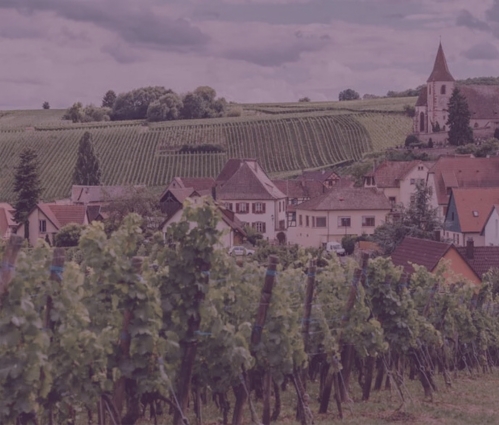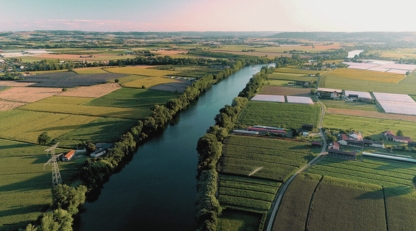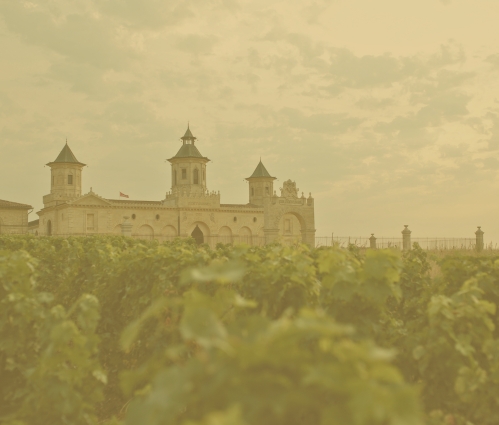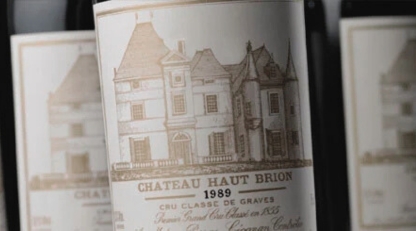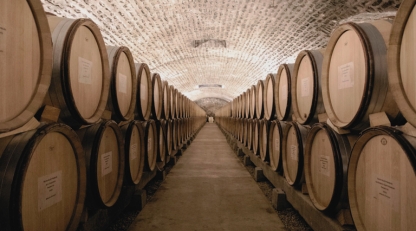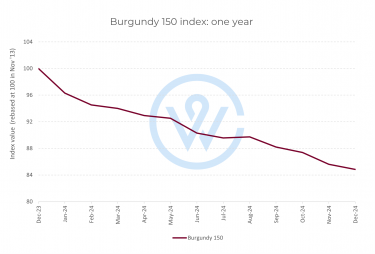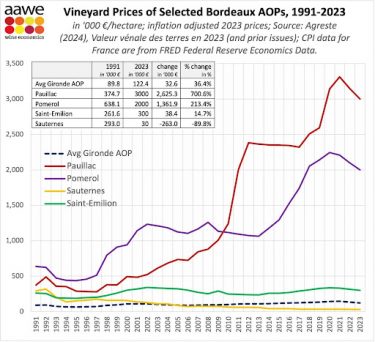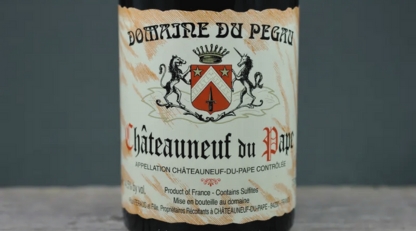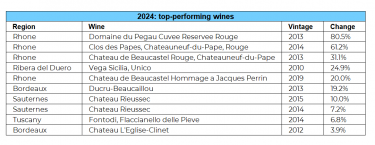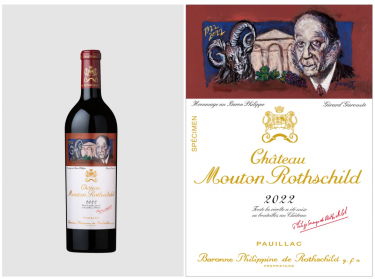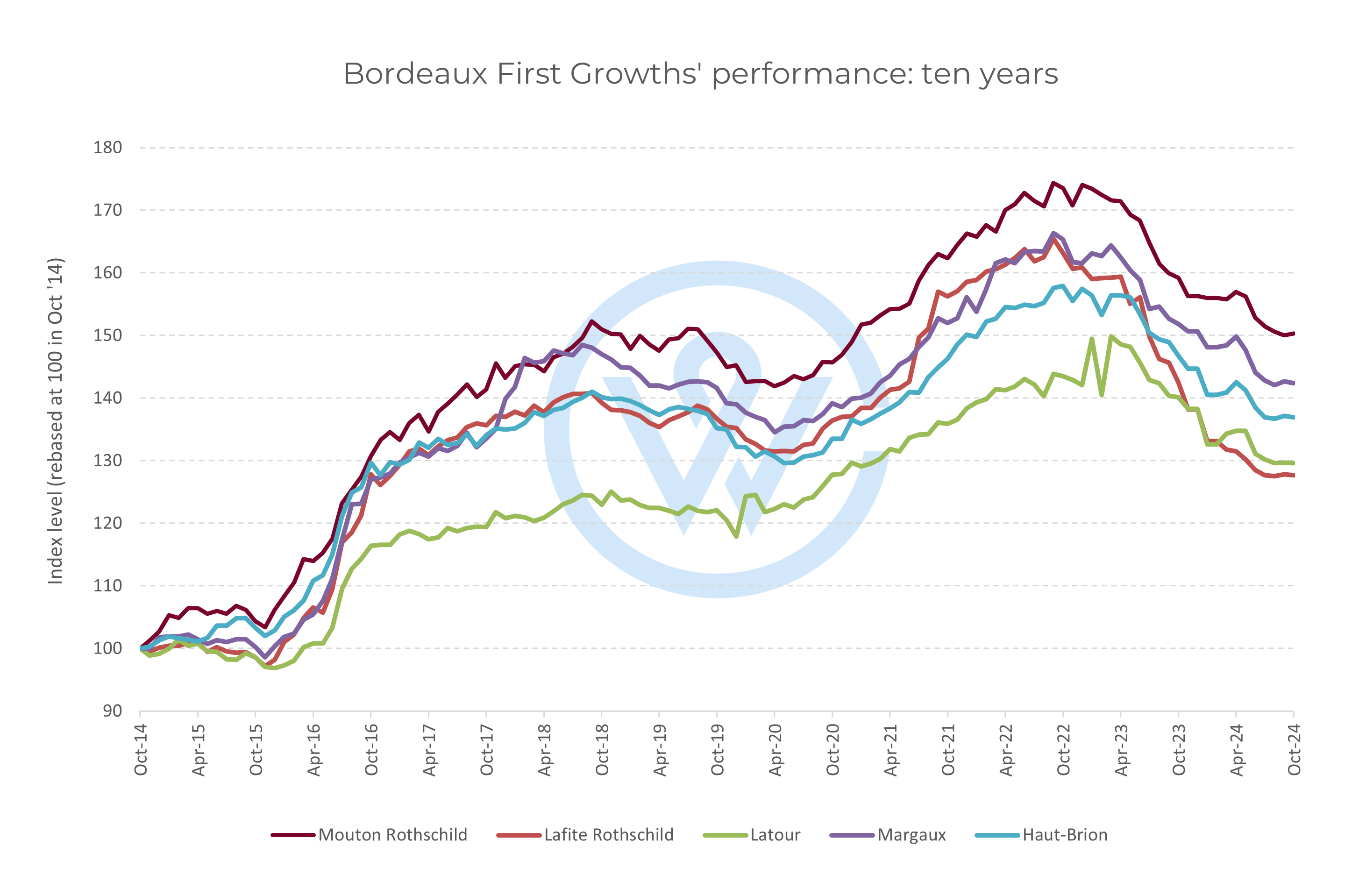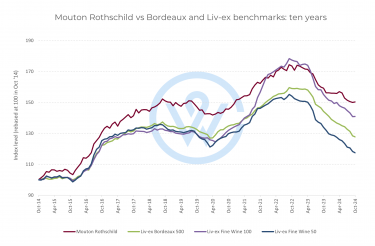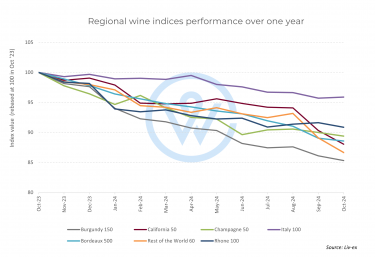Executive summary
- Q4 was marked by political developments, changing economic policies, and geopolitical events, including the re-election of President Trump.
- The strengthened US dollar boosted fine wine demand across the pond.
- Fine wine prices fell 11% across major regions in 2024, reflecting a continued market correction.
- Italy was the most resilient fine wine region, while Burgundy experienced the biggest adjustment.
- Rhône wines dominated the list of the best performing wines in 2024, with Domaine Pegau Cuvée Réservée Rouge 2013 leading (80.5%).
- Older vintages (2010-2014) performed well, reflecting the market’s preference for mature, proven wines, while new releases struggled when not priced correctly.
- Optimism for market recovery is focused on premium regions like Piedmont, Champagne, and Burgundy.
- Economic uncertainties and mixed performance in Bordeaux are expected to persist, but continued interest in fine wine signals resilience and potential for long-term growth.
Q4 in context: political and economic drivers
It has been an eventful quarter, marked by political developments, changing economic policies, and geopolitical events. The re-election of President Donald Trump in November prompted a rapid response in global markets. US equities reacted positively to the outcome, as investors anticipated business-friendly policies and potential fiscal stimulus, particularly benefiting sectors like manufacturing and technology. However, concerns over increased tariffs created uncertainties for multinational corporations.
Rising US Treasury yields, driven by expectations of future interest rate hikes, attracted capital inflows, strengthening the US dollar. While this reinforced investor confidence in U.S. economic policies, it also raised concerns about higher borrowing costs and their potential drag on economic growth. Emerging market currencies faced downward pressure as fears of US trade measures and capital outflows grew.
In late November, a US-France-brokered ceasefire between Israel and Hezbollah took effect, reducing immediate geopolitical risks after over a year of hostilities. Despite the agreement, markets remained cautious, keeping a close watch for potential disruptions to the fragile stability.
Markets in 2024: the year that was
Bitcoin made headlines this month by surpassing the $100,000 mark for the first time, peaking at an all-time high of $104,000 on Coinbase. The surge was fuelled by growing investor optimism around a favourable regulatory environment under President-elect Donald Trump, who has signalled support for cryptocurrencies through key appointments and policy proposals.
Equity markets have also enjoyed a strong year, bolstered by a resilient US economy and easing inflation pressures. These conditions have allowed central banks to pause or slow rate hikes. Strong corporate earnings, particularly in the technology and AI sectors, have further propelled the S&P 500’s stellar performance.
The global energy market in 2024 has experienced notable fluctuations. Concerns over a potential global economic slowdown, driven by weak demand from China and other developed economies, have weighed on crude oil prices. While OPEC’s production cuts have provided some price support, they have not been sufficient to fully offset the impact of declining demand.
Meanwhile, gold has reaffirmed its role as a safe-haven asset in 2024. Persistent geopolitical tensions, inflation concerns, and financial market volatility have driven demand for the precious metal, supporting its strong performance throughout the year.
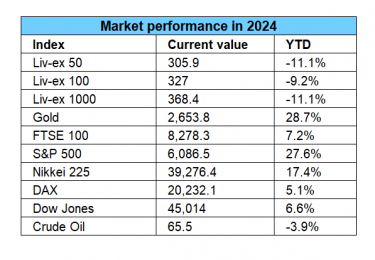
*Current values: 06/12/2024
The fine wine market in 2024
The fine wine market in 2024 continued its downward trajectory from 2023, with broad declines across major indices. The Liv-ex 100 has fallen 9.2% year-to-date, while the Liv-ex 50, which tracks First Growth Bordeaux, is down 10.9%.
Despite these overall declines, the market showcased notable regional disparities and emerging opportunities. Examined at more length in the following section, Italy has been a beacon of resilience, while ‘overheated’ regions like Burgundy have readjusted.
Notably, prices did not fall because of lower demand for fine wine. Market activity remained high, with the number of fine wine trades in 2024 surpassing 2023 by 7.9%.
Regional fine wine performance
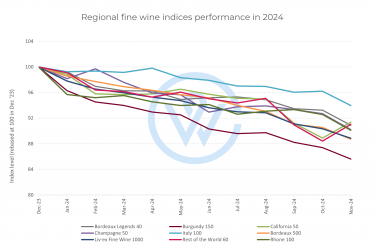
The fine wine market saw mixed performances as the year drew to a close. Italy stood out as the most resilient region, with prices falling 6% – a fraction of the 11.1% average decline in the Liv-ex 1000 index. High-scoring releases buoyed Italy’s secondary market, while diverse offerings such as Antinori Brunello di Montalcino Vigna Ferrovia Riserva (38%) underscored the country’s stability and value. Italy’s growing influence was evident in the 2024 Power 100 rankings, where it claimed 22 spots – nine more than last year – closing the gap on Burgundy and Bordeaux in terms of investor interest and price performance.
Burgundy has faced the greatest readjustment among all regions, with prices declining by 14.4% year-to-date. This correction followed years of meteoric growth and reflects a market adjustment as prices recalibrate. The decline has created opportunities for investors to acquire rare and prestigious labels at more accessible prices. Burgundy’s reputation as a cornerstone of fine wine investment remains intact despite this year’s setbacks, with long-term demand likely to persist.
Champagne also experienced a challenging year, with prices falling 9.8%. However, the region showed signs of stabilisation toward the end of the year. Older vintages led this recovery, with labels such as Taittinger Brut Millesime up 29%, signalling enduring interest in high-quality, aged Champagne.
Bordeaux, the largest and most liquid fine wine region, saw an 11.3% decline. Liquidity remains Bordeaux’s strength, but it no longer guarantees safety in today’s market. Recent vintages in particular have struggled, with many trading below their release prices.
California wines fell 8.6% but showed positive momentum in November. The region’s growing presence in the fine wine investment space has been driven by the rising popularity of brands like Dominus, Joseph Phelps, and Promontory.
Spanish wine also benefitted from surging US demand, with Vega Sicilia Unico taking the top spot as the most powerful fine wine brand in 2024. Two other Spanish wines also made the rankings – Dominio de Pingus and R. Lopez de Heredia – a testament to Spain’s growing investment potential.
The best-performing wines in 2024
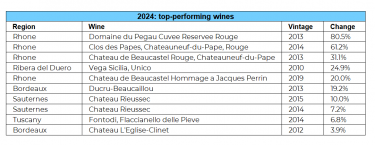
The Rhône dominated this year’s top-performing wines, claiming four of the ten spots on the list. Domaine de Pegau Cuvee Reservee Rouge 2013 led the charge with an impressive 80.5% rise. Other regional standouts, including Clos des Papes Châteauneuf-du-Pape Rouge 2014 (61.2%) and Château de Beaucastel Rouge 2013 (31.1%), highlighted the enduring demand for Châteauneuf-du-Pape from highly rated, older vintages.
Beyond the Rhône, Spain’s Vega Sicilia Unico 2010 (24.9%) showcased the strength of Ribera del Duero as a rising force in the wine investment market. Vega Sicilia also ranked as the most powerful wine brand in the 2024 Power 100 rankings.
Bordeaux and Sauternes also featured. Château Rieussec took two spots with its 2015 (10%) and 2014 (7.2%) vintages. Meanwhile, Ducru-Beaucaillou 2013 (19.2%) and Château L’Eglise-Clinet 2012 (3.9%) showed that Bordeaux’s established names have continued to attract investment interest where there has been value on offer.
A clear trend this year was the strong performance of older vintages, with wines from 2010 to 2014 dominating the list. Only two ‘younger’ vintages, 2015 and 2019, appeared on the list and no new releases. This aligns with a broader preference for mature wines, which offer proven track records and immediate drinkability.
2024 takeaways
The market downturn has presented opportunities to acquire premium wines at more accessible price points, offering a chance to diversify portfolios with an asset known for its historically strong long-term performance.
For another year, Bordeaux En Primeur struggled to attract significant interest with the release of the 2023 vintage, especially for wines where older proven vintages offered better value. Economic uncertainty further highlighted the appeal of the classics. Iconic Bordeaux vintages – such as 2000, 2005, and 2009 – and Italy’s Super Tuscans stood out as stable investment options. These wines offered a combination of historical performance and consistent demand, reinforcing their status as cornerstone assets in fine wine portfolios.
Declining prices also brought rare and prestigious wines back into circulation, offering investors the chance to secure assets that were previously inaccessible. This period allowed for strategic acquisitions of iconic labels at attractive price points, setting the stage for potential long-term gains as the market stabilises.
Below the surface of the downturn, 2024 presented great buying opportunities, making it a pivotal year for investors, whether looking to enter the market or enhance their existing portfolios.
2025 market outlook
The 2025 fine wine market outlook is cautiously positive, driven by optimism for premium regions such as Piedmont, Champagne, and Burgundy. Insights from the 2024 Golden Vines Report show that 64% of industry professionals anticipate market growth, particularly for high-end Italian wines like Barolo and Barbaresco, which are increasingly viewed as alternatives to Burgundy.
Key trends include rising demand for sustainability and terroir-driven wines. According to the report, Piedmont (20%) leads in growth potential, followed by Champagne (17%), Burgundy (14%) and Tuscany (12%), while Bordeaux faces mixed prospects, with 27% of the respondents expecting further declines. Challenges like economic pressures and geopolitical uncertainties persist but continued strong fine wine demand signals resilience in the market.
Fine wine remains the most popular collectible celebrated for its diversification benefits, sustainability and stability through different market environments.
Stay tuned for our 2025 Wealth Report, which will examine wealth and investment managers’ views and sentiments towards fine wine early next year.
See also – WineCap Wealth Report 2024: UK Edition
WineCap’s independent market analysis showcases the value of portfolio diversification and the stability offered by investing in wine. Speak to one of our wine investment experts and start building your portfolio. Schedule your free consultation today.
